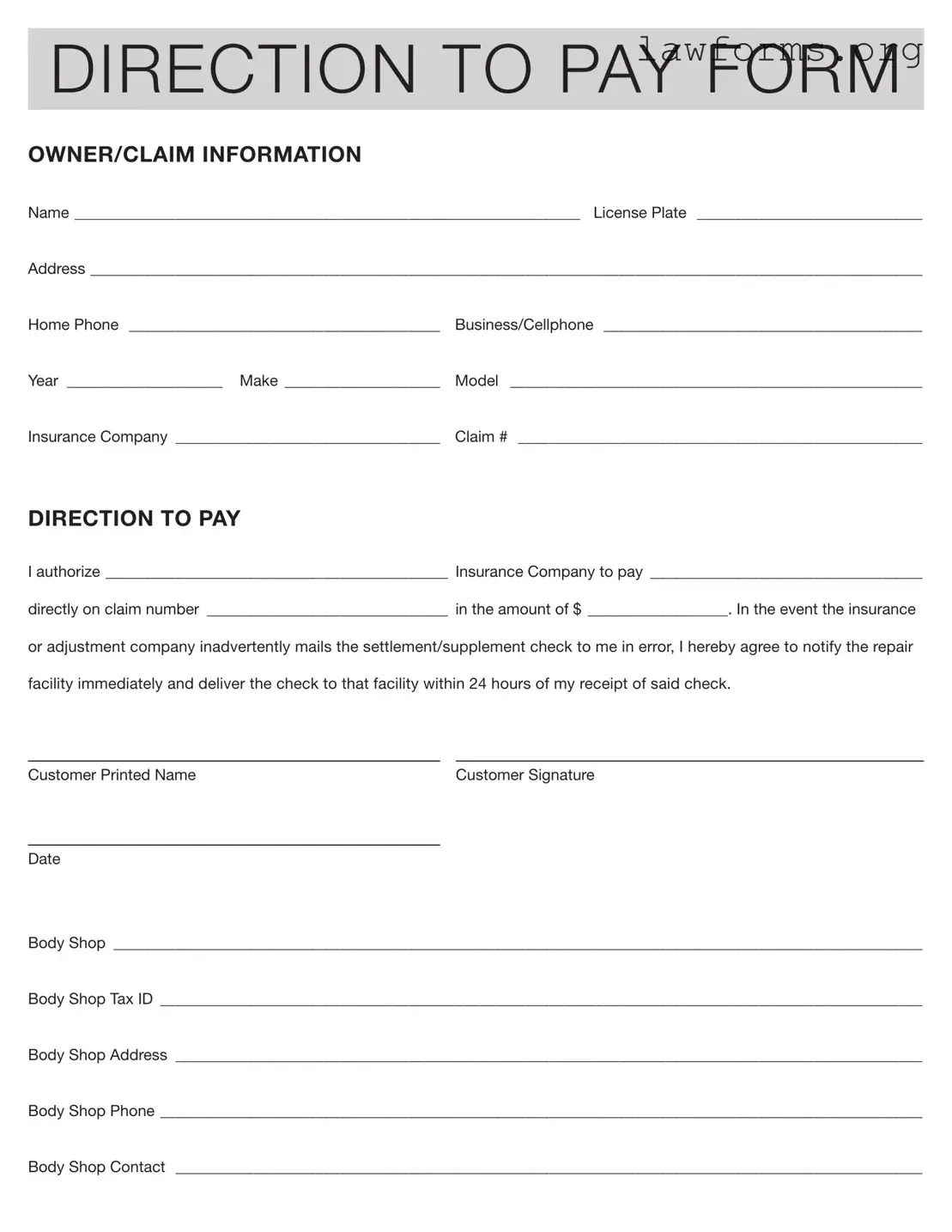
DIRECTION TO PAY FORM
OWNER/CLAIM INFORMATION
Name _________________________________________________________________ License Plate ______________________________
Address ___________________________________________________________________________________________________________
Home Phone _________________________________________ |
Business/Cellphone __________________________________________ |
Year _____________________ Make _____________________ |
Model _ _____________________________________________________ |
Insurance Company ___________________________________ |
Claim # _____________________________________________________ |
DIRECTION TO PAY
I authorize ____________________________________________ Insurance Company to pay ____________________________________
directly on claim number ________________________________ in the amount of $___________________. In the event the insurance
or adjustment company inadvertently mails the settlement/supplement check to me in error, I hereby agree to notify the repair facility immediately and deliver the check to that facility within 24 hours of my receipt of said check.
Customer Printed Name |
Customer Signature |
Date
Body Shop _________________________________________________________________________________________________________
Body Shop Tax ID ___________________________________________________________________________________________________
Body Shop Address _________________________________________________________________________________________________
Body Shop Phone __________________________________________________________________________________________________
Body Shop Contact _________________________________________________________________________________________________

